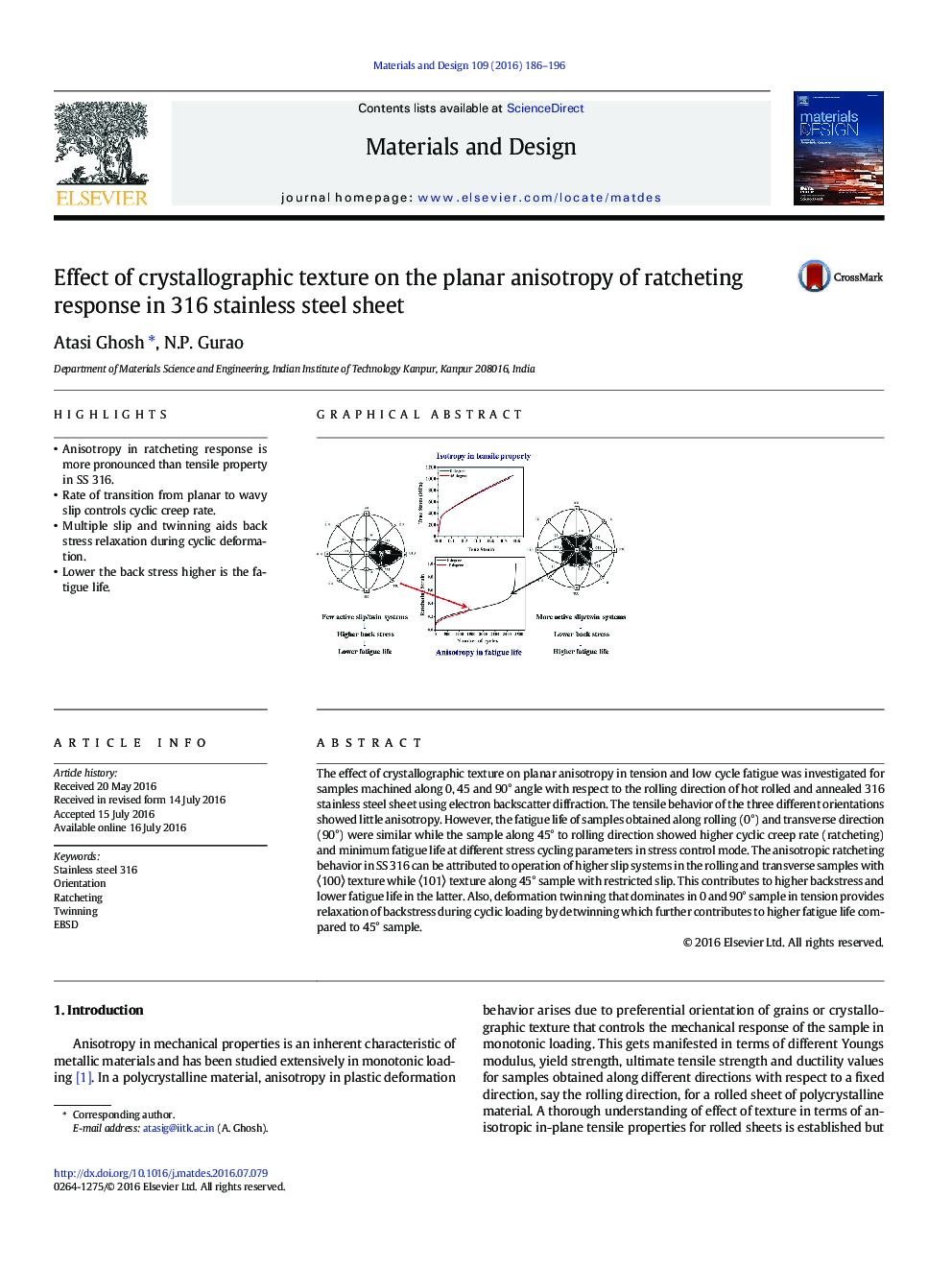| Article ID | Journal | Published Year | Pages | File Type |
|---|---|---|---|---|
| 827688 | Materials & Design | 2016 | 11 Pages |
•Anisotropy in ratcheting response is more pronounced than tensile property in SS 316.•Rate of transition from planar to wavy slip controls cyclic creep rate.•Multiple slip and twinning aids back stress relaxation during cyclic deformation.•Lower the back stress higher is the fatigue life.
The effect of crystallographic texture on planar anisotropy in tension and low cycle fatigue was investigated for samples machined along 0, 45 and 90° angle with respect to the rolling direction of hot rolled and annealed 316 stainless steel sheet using electron backscatter diffraction. The tensile behavior of the three different orientations showed little anisotropy. However, the fatigue life of samples obtained along rolling (0°) and transverse direction (90°) were similar while the sample along 45° to rolling direction showed higher cyclic creep rate (ratcheting) and minimum fatigue life at different stress cycling parameters in stress control mode. The anisotropic ratcheting behavior in SS 316 can be attributed to operation of higher slip systems in the rolling and transverse samples with 〈100〉 texture while 〈101〉 texture along 45° sample with restricted slip. This contributes to higher backstress and lower fatigue life in the latter. Also, deformation twinning that dominates in 0 and 90° sample in tension provides relaxation of backstress during cyclic loading by detwinning which further contributes to higher fatigue life compared to 45° sample.
Graphical abstractFigure optionsDownload full-size imageDownload as PowerPoint slide
